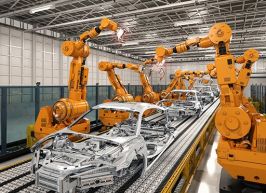Join getAbstract to access the summary!

Join getAbstract to access the summary!
Kathryn Schulz
When Shipping Containers Sink in the Drink
We’ve supersized our capacity to ship stuff across the seas. As our global supply chains grow, what can we gather from the junk that washes up on shore?
The New Yorker, 2022
What's inside?
Shipping containers contain – and fail to contain – the world consumer culture’s excesses.
Recommendation
Thousands of cargo ships sail the world’s oceans at any given moment. They ferry cheap goods manufactured in far-flung places and packed into large containers to satisfy consumers’ enormous appetite for disposable products. While only a small fraction of these containers end up in the ocean due to storms or accidents, as Kathryn Schulz reports for The New Yorker, their impact on the environment can be significant. Currently, few enforceable regulations mitigate the shipping industry’s negligence. Lost containers’ ocean-going detritus does have one upside: It helps oceanographers better understand currents.
Summary
About the Author
The New Yorker staff writer Kathryn Schulz won the Pulitzer Prize and a National Magazine Award, and wrote the memoir, Lost & Found.























Comment on this summary